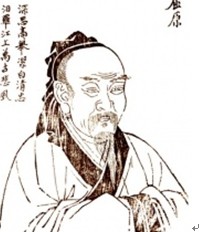Qing Ming started during the Jin Dynasty with Prince Chong Er (697 BCE – 628 BCE). 1 Chong Er lived among rivalry and betrayal as the princes and their mothers competed to get the throne. One concubine, intent on making her son crowned prince, murdered the first prince.

Chong Er
Since Chong Er was second in place, he posed as the concubine’s next target. Jie Zi Tui, a loyal government official, feared for Chong Er’s life and so helped Chong Er escape from the Jin Imperial Court.
Jie and Chong Er lived a difficult life after the escape from the imperial court. One time when they traveled to a deserted area and could not find any food, Jie cut off his flesh from his thigh and cooked it for Chong Er as food. 2
The loyal official and the prince traveled and lived in harsh conditions three more years until the concubine died. After her death, they returned to the imperial court and Chong Er got restored to his rightful place a prince. Soon Chong Er became king. During his reign he awarded numerous people, but forgot about Jie. When he finally did remember, he sent Jie an invitation to court, but Jie refused.

Jie Zi Tui
As a result, the king tried to force Jie out of his home by burning the mountain. Jie never left his home, showing that he would rather choose death over submission. The king realized his mistake and was filled with remorse. So in order to honor the Jie, Chong Er held a memorial ceremony for him every year. On that day, the people mourned for Jie and avoided using fire. 3
More than a millennium later, Qing Ming Festival looks nothing like it did then.
Find out what this once grim holiday has evolved into.
Continue onto the celebration of Qing Ming Festival.
- “Duke Wen of Jin – China Culture.” History – China Culture. Web. 15 May 2011. <http://history.cultural-china.com/en/46History4192.html>. ↩
- “Pictures of Jie Zi Tui (開山感天介子推)” Jave’s Religious Place. Multiply. Web. 16 May 2011. <http://javewu.multiply.com/photos/album/284>. ↩
- Zhuo, Hao. “Qing Ming Festival and Its Origin.” Chinese Culture. The New York Times Company. Web. 16 May 2011. <http://chineseculture.about.com/library/weekly/aa031201a.htm>. ↩
